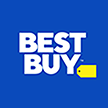
Sounds like clickbait, right? A “listicle”, questionable facts loosely stitched together only to get you to visit. But what this really is is ten solid, if I say so myself, marketing tips based on almost a decade of technology marketing.
I wrote them down because each of them has proven valuable in conversations with people that are marketing startups in one way or another. Here they are, in no particular order.
#1. Talk to lots of customers in a short period of time.
“Talk to customers” is the piece of advice that has probably the lowest ratio of awareness to real usage ie. everyone knows it and no-one seems to do enough of it. Let me one-up this: speak to a couple of dozen of customers in a short time at least once when you start working with a new company or customer group.
I spoke to nearly 40 customers in 3 weeks for an hour each about 1,5 years ago as part of a customer persona exercise and while the result was useful, the process of having gone through this was even more useful. This dramatically increased my ability to create connections between Pipedrive’s offering and our customers. I can now relate new features we announce to specific places in the day-to-day of customers. When I look at product usage stats or market research slides, particular pieces of these conversations spring to mind and help to bring data to life. (There was also the practical added benefit of finding three really insightful case studies for our blog.)
And here’s a practical tip. The answer to the question how many customers should I talk to is: keep talking to more customers until the stories you hear back start to resemble each other. If you have a homogenous user base the right number may be 10, but in most cases it’s safe to aim for 25 or so.
#2. Build a referral program.
And make it double-sided, so that both the inviter and person invited get something out of the transaction. In the case of Pipedrive’s referral program, the person referred gets an extra month of trial and if the invited user subscribes, the inviter gets Pipedrive credits as a reward. Nothing hugely attractive but adds a predictable number of new customers every month without requiring almost any management.
#3. Don’t count on press releases.
Press releases in early stage tech media relations are not necessarily bad; they’re just not an effective way to get coverage. Instead, find the relevant journalists and bloggers in your field and reach out to them directly with a pitch that is concise, personal and focused on helping them to write a good story (vs helping you to get all the details about your product or service out).
Press releases are useful for two things though. Writing one helps to fine tune what you want to say and generates an artificial deadline that adds a sense of exclusivity and urgency to your communication with your shortlist of bloggers. (“We’re announcing our funding round next Wednesday, but happy to send you all the details this week already”).
#4. Build an email list as early as you can.
Email is the best marketing channel, period. It’s efficient, highly trackable and 99% under your control. When you’re at a very early stage, building an email list of interested people makes it easier to launch with a bang. And a later stage it’s perfect for scaling content marketing.
At Pipedrive, we invest quite a bit of time and money into distributing the content we’ve created. With social algorithms changing more frequently than Donald Trump’s views, email is by far the most predictable and efficient channel for getting people to read and share our blog posts.
#5. Define value proposition early.
This one is a bit of a “I wish I’d done this earlier” for me. During the early days of Pipedrive, we tried to lock down the key messages of the product and didn’t get to a good place with it. We had too many potential ways to talk about Pipedrive, and not enough validations to pick one. So we (read: I) kind of let it drift. It’s not like we had nothing: there were a couple of not half bad descriptions and we did numerous AB tests on the website to find the best-converting one. Also, we had a modest media budget and the number of people in the company was only a couple of dozen, so information tended to spread organically. All in all, this didn’t appear like the most pressing thing to work on.
And then Pipedrive raised its A-round and the team as well as marketing budget started to grow rapidly, and we were in desperate need of a crisp value proposition. We got it done and have gotten it socialized internally, but we really should have taken the time for this a year or two earlier.
#6. Customize your site with geo-specific elements.
As documented, Pipedrive geo targets elements of the site based on country and larger US states. Web visitors from Miami see different testimonials than those from California or Germany.
We’ve changed our website in several ways since we released this but back in the day this “hack” had a double-digit conversion uplift.
#7. Do keyword research.
Keyword research is a bit of an exercise and a bit of an ongoing process that answers the following questions:
- What content to produce to hit specific business goals
- What language to use overall and on specific landing pages
- Where to focus link building efforts
Not a bad list of questions to have answered, right?
Time and time again I’ve seen that content produced without a solid keyword base is a bit like building a gas station away from roads. Unless your model works with content that goes “viral” it’s a wise thing to invest in keyword research.
#8. Start paid marketing early.
At Pipedrive, we started experimenting with a$1000 monthly advertising budget as soon as we had that much spare money in the bank. While the effect at the time was almost invisible early on, this helped to start learning. And later, when we had money to invest into ads, we knew which channels drove new business and what was life-time-value (LTV) of different channels and keywords.
#9. Find ways to get qualified traffic where CPA/CPC is notably lower than major platforms like Adwords.
Related to the previous tip, Adwords is very often the logical place to start for existing product categories because the buying intent is there along with a decent volume of searches. The challenge for many startups is that if you pay $10 or more for a click, it’s difficult to make economics work if your funnel hasn’t been optimized yet, you don’t have real churn and LTV data and you’re not funded in a similar fashion to that geese are fed in Normandy. (This might be a bit of a niche analogy but a man has to take risk every now and then. Even useless risk.)
The good news is almost always there are channels that have equally qualified traffic but that charge a much more reasonable CPC because they’re in growth mode and/or are getting their traffic for cheap thanks to good SEO.
Just search for keywords relevant to you and see which sites pop up on the first page of Google.
#10. Talk to others in your field.
The best tips and precise stats are seldom shared in public blog posts like this. And sometimes the person that knows exactly the thing you need just is not a blogger/speaker type. So I’ve developed a habit of reaching out to marketers in my field and scheduling 40-60 min calls to compare notes. Sometimes I’ve done this via intros, but even cold Twitter or LinkedIn outreach works with a 50+% hit rate in my experience. Speaking to active practitioners has a 1:10 ratio of usefulness compared to time spent with books, blogs and podcasts, so this thing which never seems urgent to justify taking the time for, is a very wise thing to allocate time for.
These were the ten tips I felt were relevant enough to share. I’m failing my New Year’s Resolution to write one decent post per month but I’m already past the number of posts of last year, so I might consider this fail a success in the end.
Author: Andrus Purde
Courtesy: www.purde.net


















